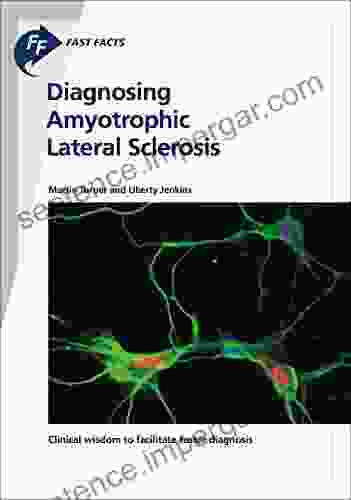Amyotrophic lateral sclerosis (ALS),also known as motor neuron disease, is a progressive neurodegenerative disFree Download that affects the motor neurons responsible for muscle movement. As these neurons deteriorate, the brain loses its ability to control voluntary muscle movement, leading to muscle weakness, atrophy, and eventually paralysis. ALS is a debilitating and life-threatening condition, with a median survival time of three to five years from diagnosis.

5 out of 5
| Language | : | English |
| File size | : | 12599 KB |
| Text-to-Speech | : | Enabled |
| Screen Reader | : | Supported |
| Enhanced typesetting | : | Enabled |
| Print length | : | 149 pages |
A neurologist examining an ALS patient.
Clinical Presentation
The symptoms of ALS can vary widely, depending on the location of the affected motor neurons. The most common initial symptoms include:
- Muscle weakness in the limbs, hands, or feet
- Difficulty speaking or swallowing
- Muscle cramps and fasciculations
- Clumsiness and loss of coordination
- Progressive paralysis
- Respiratory and bulbar involvement (difficulty breathing, swallowing, and speaking)
Diagnostic Process
Diagnosing ALS can be challenging, as there is no single definitive test. The diagnostic process typically involves a combination of clinical assessment, electrophysiological studies, imaging, and laboratory tests.
Clinical Assessment
The neurologist will perform a detailed clinical examination to assess the patient's muscle strength, reflexes, and coordination. They will also review the patient's medical history and family history for clues that may suggest ALS.
Electrophysiological Studies
Electromyography (EMG) and nerve conduction studies (NCS) are electrophysiological tests that can measure the electrical activity of muscles and nerves. EMG can detect abnormal electrical discharges in muscles, known as fasciculations, which are common in ALS. NCS can assess the function of peripheral nerves and identify any damage or degeneration.
Imaging
Magnetic resonance imaging (MRI) and computed tomography (CT) scans can provide images of the brain and spinal cord to rule out other conditions that may mimic ALS, such as multiple sclerosis or spinal cord compression.
Laboratory Tests
Laboratory tests, such as blood tests and genetic testing, can be used to screen for metabolic disFree Downloads, autoimmune diseases, or genetic mutations associated with ALS.
Differential Diagnosis
Several other conditions can mimic the symptoms of ALS, including:
- Multiple sclerosis
- Guillain-Barré syndrome
- Hereditary spastic paraplegia
- Cervical spondylotic myelopathy
- Poliomyelitis
It is important to differentiate between ALS and these other conditions to ensure accurate diagnosis and appropriate treatment.
The diagnosis of ALS is a complex and challenging process. However, with a thorough clinical assessment, electrophysiological studies, imaging, and laboratory tests, healthcare professionals can accurately diagnose ALS and initiate appropriate management strategies. Early diagnosis is crucial to optimize patient care, provide timely access to supportive treatments, and facilitate enrollment in clinical trials.
If you or someone you love is experiencing symptoms of ALS, it is important to seek medical attention promptly. Accurate diagnosis and early intervention can make a significant difference in the quality of life for people living with this challenging condition.



























































































